Finding Rocks to Make Stone Blades
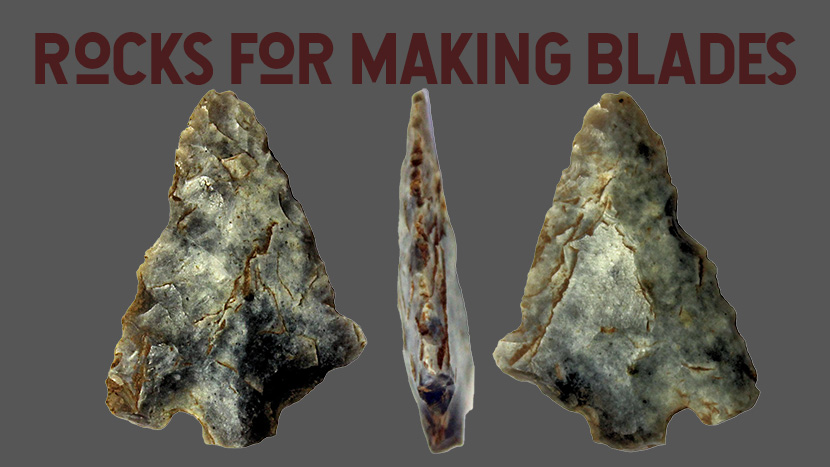
Before humans harnessed the power of metal, stones were the only way to make sharp tools, but this was not as limiting as you may think. Though steel may be longer lasting and stronger than a stone, stone arrowheads, spears, and knives have helped humans to survive for literally thousands of years. Making stone blades is a deep part of our history, and is also a key survival skill that we shouldn’t lose.
Out of all our survival tips you’ll find here, some of the key ones are to have rope with you, carry multiple ways to light a fire, and to have a blade. Now, if you don’t happen to have a knife with you, you can always make one. However, where do you get started?
What Rock is Used for Stone Blades?
The first important piece to making a stone blade is of course finding the right rock. Some of the best types of rock for making blades are:
- Chert
- Flint
- Quartzite
- Obsidian
You don’t need to know the geology behind these rock types to be able to make stone knives, however, understanding how to identify them, how they form, and more importantly how they break, is useful. To get started, chert and flint are sedimentary rocks, quartzite is a metamorphic rock, and obsidian is glassy volcanic stone. Let’s take a look at why these different rocks can be great for blades.
Basic Geology of Stones for Making Blades
Formation
Sedimentary stone is a rock that was once a lot of little parts, like sand and minerals, that with pressure and time, accumulate along with some chemical precipitates to become one very solid rock.
Metamorphic rocks are formed when preexisting rocks experience intense pressure as well as heat, deeper in the earth’s surface. When the rock is heated under pressure, the minerals recrystallize or reorient, new minerals grow, and the rock’s texture and appearance totally change,. This process often results in bands of different colors.. You will see these interesting patterns in common metamorphic rocks like quartzite and marble for example.
Obsidian simply occurs when lava cools extremely quickly and pretty much no crystals are formed. This is what gives it its smooth glassy texture.
Breaking
Flint, chert, and obsidian all have what geologists will call “conchoidal fracture,” meaning that they break off with sharp curved edges. Fracturing this was is what makes them so good for blades. Quartzite on the other hand, breaks off into irregular and jagged planes. However, these pieces are still sharp, meaning it is still a great stone for making blades.
Finding and identifying stones for blades
Where you live is a major factor in which stones you will find, but here are some details about each stone type:
Chert Stone
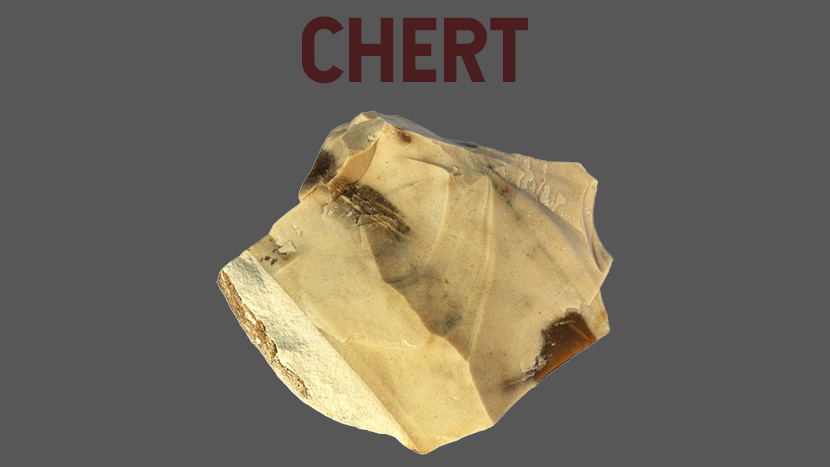
Chert is primarily composed of extremely small pieces of quartz and the silica from ancient broken-down sea life. It is dull or sometimes “semi vitreous,” which just means a little bit shiny, and comes in a huge range of colors depending on what other minerals and impurities can be found in it. In general, the most common colors are white, gray, black, blue, green, and red. You can find chert bedded in with chalk, shale, or maybe even hematite. As previously mentioned, it has great conchoidal fracture, making it perfect for making blades.
Flint stone
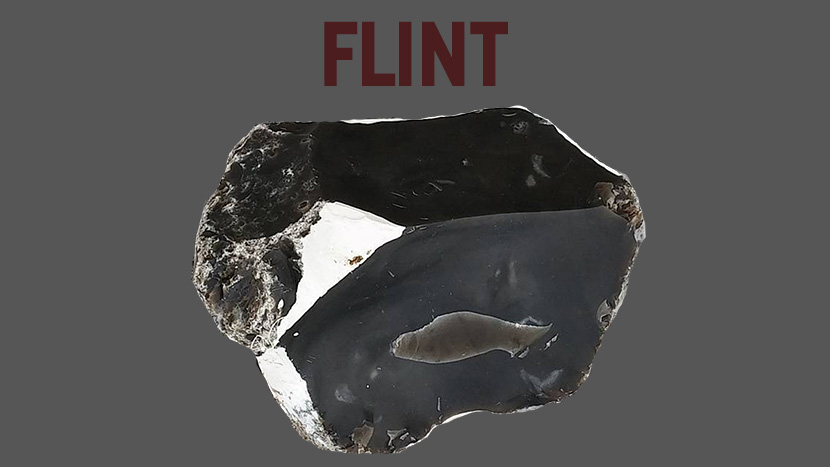
You might recognize the name of this rock because flint is often used to start fires by striking it against metal. Interestingly enough, flint stone is actually a variety of chert!
The main distinction seems to be that flint is all black. You also will normally find flint in clay, which is because the clay minerals incorporated into the rock is what gives the flint its dark color. Since flint is a form of chert, we also get this excellent conchoidal fracture that we are looking for.
Thanks to sandatlas for letting us use their chert and flint photos!
Obsidian
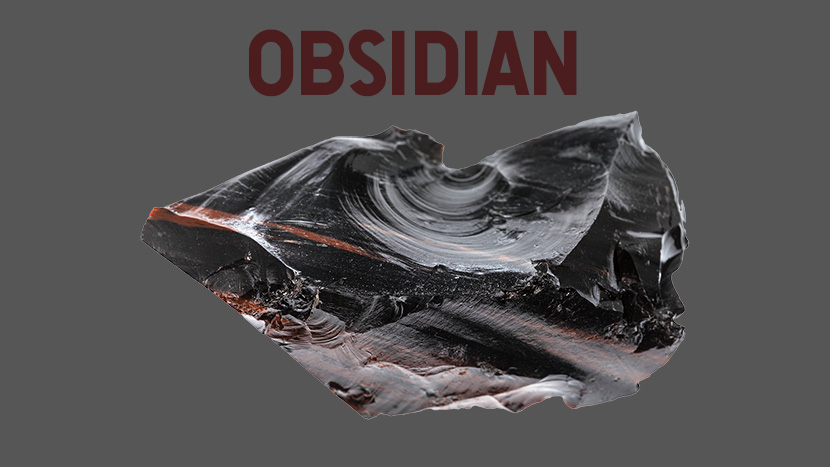
Obsidian is a natural volcanic glass that forms when lava cools rapidly, so rapidly that no crystals can form. This “volcanic glass” has a smooth, glassy texture, is very lustrous (shiny!) and you guessed it, has a conchoidal fracture when it breaks. This lava rock in particular was highly prized by ancient cultures for tool making and for use in sculptures. Of course, in order to find it, you will have to live somewhere where some, if not very ancient, volcanic activity has occurred.
Quartzite rock
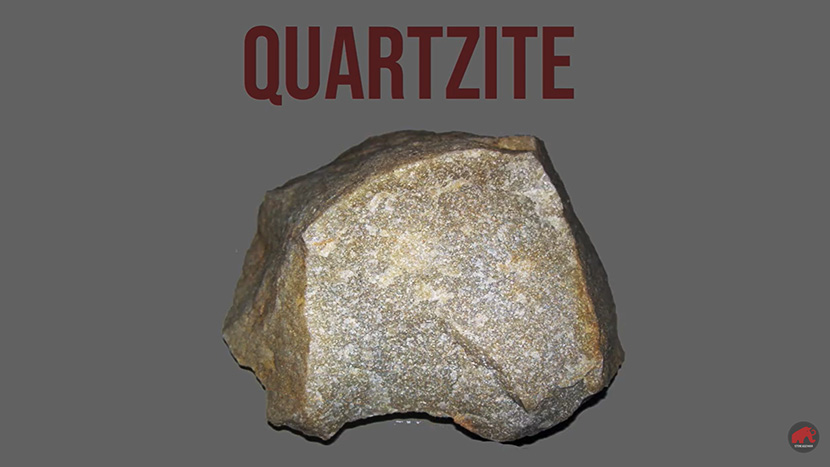
Quartzite is the only rock out of these four that does not have conchoidal fracture, however, it does break off in sharp pieces, just a bit more irregularly. This means that quartzite is also a great candidate for making blades.
Quartzite is a hard, durable metamorphic rock made up mostly of, yes quartz. It has a smooth and glassy surface and comes in an incredible range of colors. The easiest way to find it out in the field is by looking for rocks that already have a bunch of microfractures in them and pieces broken off.
Looking for rocks to make stone blades
You don’t have to be a geologist to be able to find the right rocks for making blades. Even if you can’t immediately recognize the rock, you can take a bunch of different rocks and try to start chipping away at them to see if they break off into favorable shapes – sharp pointy ones that is.
When you start looking, you can try to find a rock with a lot of micro-cracks, or ones that look like they have long smooth curved pieces broken off. This means you will probably be able to break off similar pieces in order to make blades. Then, even without knowing how to make a full out stone blade or spear head, you can break the rock into little pieces that you can use like small razor blades and cutting tools. With time, you can start practicing with making larger blades. Though we don’t get into the details of blade making in this article, practice makes perfect, so try it out for yourself first. Later, there are quite a few tutorials out there, and we plan on doing a video in the future.
In our video below our good friend and famous survivor Hazen Audel perfectly demonstrates how exploring and trying different things out is the best way to learn. Watch as Rob and Hazen search for some quartzite on the river bank.

